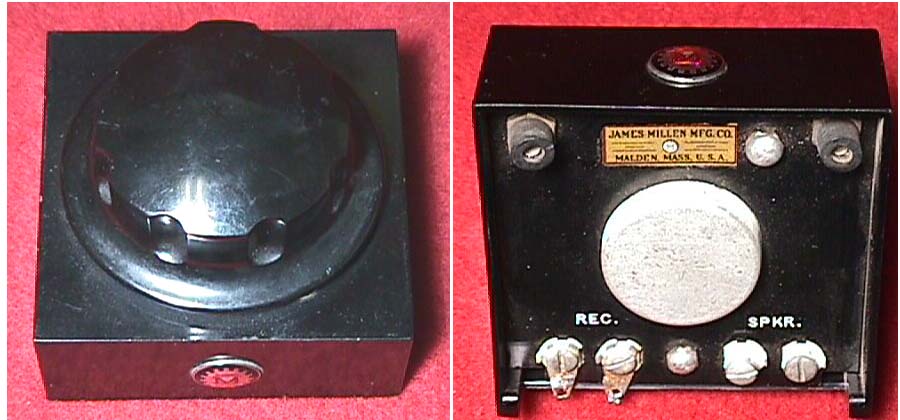
70721 Hetrofil

|
This device provides a means via direct placement into the audio output of a communications
receiver to reject or surpress an interfering signal or audio beat note. Thus if
two CW stations are being received simultaneously the HETROFIL (tm) may be adjusted
so as to reject either of the signals and accept the other. It may be used externally
as a separate unit or built into a completed receiver. When used with a receiver
without the modern type crystal filter it has all of the advantages of the phasing
control of the crystal circuit and at the same time is much easier and quicker to
operate. The HETROFIL (tm) may be used with any type receiver and provides a means
of selective control for TRF receivers comparable to the crystal filter used in
superhetrodynes and at a much lower cost. A technical paper fully describing this
device appeared in the September, 1939 issue of QST. Manufactured under license
from the inventor, Dr. R W Woodward. It is a very simple device based on the Wein
bridge circuit. Thus it uses no active devices and requires no external nor internal
DC power source. The whole unit consists of two fixed capacitors, two fixed resistors
and two ganged potentiometers. The Wein bridge had found extensive use in early
radio for making both audio and radio frequency measurements. It was reported by
Dr. Woodward that the idea for using the Wein bridge circuit with these frequency
measurements that gave him the idea to apply its use in the receiver audio output
to provide sharp balance or null point adjustments for removing troublesome hetrodyne. The HETROFIL is reported to be the first piece of equipment for the amateur radio market manufactured by the Millen Company. Although they were already busy manufacturing electronic and mechanical components. The jeweled logo appears only on the early versions of this filter. This is the only piece of Millen equipment owned by Don Buska, N9OO, that has this type of logo identifier. The HETROFIL was discontinued in 1945. |